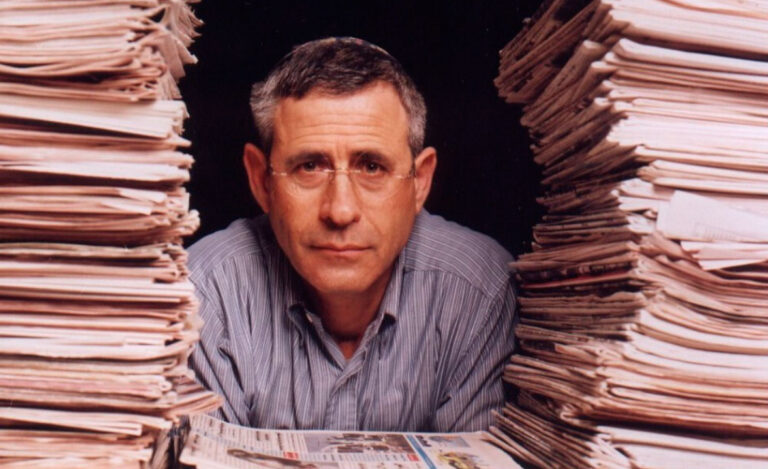Victor Cohen
“Sonny” was two years old when his parents noticed that something wasn’t right. He was facing some difficult challenges, and wasn’t doing the things his peers were doing. He wasn’t speaking, and he lacked fine motor skills. His parents were determined to get him back on track, and eagerly looked forward to him starting school. But the preschool informed them that something was wrong, and that their program was not the appropriate setting for him. Sonny’s parents were shattered, and didn’t want to believe it.
Then they heard about Reach for the Stars – a unique school for children requiring extra help with their development and education.
“You know when your child isn’t thriving,” says Reach for the Stars’ founder, Barbara Matalon.“Yes, it is terrifying, but it can be turned around with the proper care.”
Sonny entered Reach for the Stars and saw extraordinary progress in speech, social skills, and education. There was high transparency and a real sense of community in the progress Sonny began to make. “They held our hand and walked us through every step,” his parents recalled.
The program was all-inclusive, going all-in to ensure that Sonny would grow up with the tools he needed to succeed. His parents explained that they received help with things like potty training and sleep training, and that staff would even come over on weekends to provide extra help.
The school put the parents in communication with the teachers, who sent status reports every day, as well as videos of Sonny beginning to improve. And they began to see it with their own eyes, as one day, to their sheer delight, Sonny uttered a word. Soon, one word became two, two words became three, and Sonny continued to improve under the tutelage of Reach for the Stars.
As Sonny continued to progress, Sonny’s parents tell, the Reach for the Stars team was “optimistic where they needed to be and real where they needed to be. They were very clear about everything that was going on.” Sonny’s parents believe that this approach helped immensely in their son’s journey, as it allowed them to maintain balanced, reasonable expectations for what the team could do.
A Graduation Speech Like No Other
Then, Reach for the Stars gave the green light for what they called a “trial run” at a mainstream school for several weeks, with Sonny’s teacher observing his progress, seeing how he would do on his own. With the help of Hashem, Sonny passed with flying colors!
It was clear that Sonny was ready to continue his educational journey without the help of Reach for the Stars. As they did for all their graduates, Reach for the Stars set up a graduation ceremony for Sonny. They made him a small cap and gown, his teachers gave him gifts, and his parents could not have been prouder. Then Sonny himself had the highlight of the day when he gave a full speech! To see a child who started out non-verbal, now graduating with a speech, was truly amazing. Sonny officially moved into a mainstream school, where he continues to thrive until today.
Reach for the Stars nurtures and educates our community’s children until they no longer need the school’s help. With their proven track record of success, their scientific model for advancement, and, of course, Hashem’s help, Reach for the Stars acts as a course-corrector for kids who may be having difficulties – educational, social, or with communication. Reach for the Stars aids these children and ensures they are properly prepared to continue on their journey through school and into adulthood.
To learn more about what Reach for the Stars does, I had the privilege of interviewing its founder and several parents. We discussed the history of the organization, how its model for success works, and some of the specific ways Reach for the Stars brings out the best in its students.
“He Just Doesn’t Fit In”
The story of this remarkable institution begins nearly 23 years ago, when Barbara Matalon was working with Bikur Holim, a widely acclaimed organization which serves the community in many different capacities. During her time at Bikur Holim, Barbara became aware of a need which she believed was not being addressed: children requiring special help in early education.
She recalls how parents would come with children who, for one reason or another, would not be accepted in the typical playgroup. Many of these children were non-verbal. One parent said, “I wanted to hear him say a word, even just ‘no,’ or at least look or glance to let me know that he knows I’m Mommy.”
Unfortunately, these children faced developmental obstacles which they could not surmount. There was no appropriate educational framework for them, and there was no support system for their parents.
“Young parents came in heartbroken,” Barbara explained. “They’d say, ‘He just doesn’t fit in. I tried him in early childhood.’ We know this can be turned around. We know this can be changed.”
Our community rightly takes pride in the way it strives to take care of everything, and to support fellow members dealing with all kinds of hardships. At that time, though, it seemed that parents of struggling young children had nowhere to go. They were saying things like, “I cry with him, since I don’t know if he is crying because he’s hungry, in pain, or just wants something and doesn’t know how to tell me. I just hold him and cry.”
Parents needed a solution, an institution that could help their children turn into the stars that they knew they could become. No parents want to see their children “warehoused,” with their developmental and educational issues swept under the rug.
Together with a team of parents, and a friend named Nancy Levy, Barbara set out to research schools around the east coast that had shown signs of success in reversing challenging conditions which would generally bar students from acceptance in mainstream schools. Upon completing their research, the group drafted a plan and opened a Sunday respite program for struggling young children in the community. From there, they proceeded to lay the groundwork for a full-fledged schooling program, which, in 2005, became Reach for the Stars. This program was designed to ensure that the children would make real, enduring progress, turning whatever challenges they may have had into areas of strength and hope. Ever since its founding, Reach for the Stars has been a beacon of light for our community, and a source of inspiration, through the profound impact that it has had on so many of our precious children’s lives.
A Proven Model of Success
The institution’s model is built around three key elements in the process of helping the child to succeed:
- Reach for the Stars has a 1:1 student-to-teacher ratio, and all teachers are professionally trained. The institution does not hire paras or aides, and brings in only top-level professionals to work with its students.
- The school is in session 12 months a year, recognizing that these youngsters require consistent care and attention, no less in the summer than during the rest of the year.
- Reach for the Stars follows a scientifically-based approach, while adapting the formula individually to each student, as every child is unique with unique challenges and unique needs. The formula must also be repeatable, in a way that allows the student to effectively develop the skills he or she needs to develop.
“Mikey” is a current student at Reach for the Stars, and a particularly shining example of how far its students can go. He was non-verbal, and had trouble understanding concepts and communicating with those around him. His parents brought him to a therapist, but unfortunately, he did not progress. Then, they decided to send him to Reach for the Stars, and Mikey began to see exponential progress.
“I couldn’t get over how he had a teacher for each area!” Mikey’s mother enthused, marveling at the fact that each subject is handled by a different staff member. These professionals give the children under their care daily speech therapy, occupational therapy, behavioral therapy, ABA therapy, academic help, and social skills training. With this approach, Reach for the Stars ensures that no stone goes unturned.
“We only use the best professionals in each field,” said Barbara.
Mikey’s case exemplifies the lengths that Reach for the Stars is willing to go to ensure each student’s wellbeing and achievement.
“He wouldn’t eat anything that wasn’t crunchy,” Mikey’s mother says, “so he was put on their feeding therapy program.” The feeding therapist taught Mikey to be able to eat other foods.
The school evaluates each child to determine all his or her various challenges, and then adapts its program to target the particular areas of hardship. This is where the 1:1 ratio comes into play, allowing each child to receive the professional attention that he or she needs.
Baruch Hashem, Mikey made enormous progress in his development and in overcoming his challenges. He became more loving and verbal.
“He used to not want to play with anyone, but now, he loves to play with people!” his mother jubilantly reports. With Hashem’s help, he will continue to progress and ultimately graduate.
The parents whom I interviewed all gave the same advice: start the process at a young age.
“The more you hide it, the tougher it ends up being,” one parent warned. “Do everything you can do for your child, and be vocal about it. Know that everything comes from Hashem, and your job is to do the best you can. And, most importantly, love your child.”
Going the Extra Mile
Typically, when you leave school or work at the end of the day, it doesn’t follow you home. Once you leave the doctor’s office, the doctor doesn’t show up at your house later. Not so with Reach for the Stars!
In their commitment to “look at the whole child,” the staff of Reach for the Stars offer extra services on the weekends, and are available whenever parents need help.
If, for example, a parent is afraid to take the child to the dentist alone, a therapist from Reach for the Stars accompanies the parent and child to ensure everything goes well.
“On Saturdays and Sundays they are part of our family!” one parent marveled, explaining how the school truly goes above and beyond for her child.
The level of care provided by Reach for the Stars can only be described as unprecedented, with the staff going as far as they possibly can to help these children succeed.
Reach for the Stars takes their children on various kinds of excursions where they are challenged to apply the skills they learn in their therapy sessions in real-life settings. Mikey’s mother describes that on these trips, “they teach him how to leave a place he really likes – even though he doesn’t want to.” The school also runs groups to give children social opportunities. Many of the children have considerable difficulty socializing, and need to learn this critical skill. The school offers different groups to engage each child’s interest; sports, cooking, reading, gymnastics and music. These groups broaden the children’s interests and give them the opportunity to socialize with their peers.
The ultimate goal of Reach for the Stars is for their students to not need them. Once a child reaches that point, when he or she can attend a mainstream school, the child graduates with a beautiful graduation ceremony. The mission of Reach for the Stars has then been successfully completed.
Through close monitoring, limitlessly devoted care, and an emphasis on building the right skills for each child, Reach for the Stars’ state-of-the-art program has given hope to hundreds of families over the past 20 years. They have succeeded in helping so many youngsters bridge the gaps between them and their peers so they could receive a mainstream education and blossom. Children who began their journey in the care of Reach for the Starts, facing various difficult challenges, have gone on to attain incredible heights.
If you have a struggling young child, Reach for the Stars can help your child progress, learn, and shine brightly – and the earlier the child begins, the easier the journey to success will be. For more information, please contact Reach for the Stars










